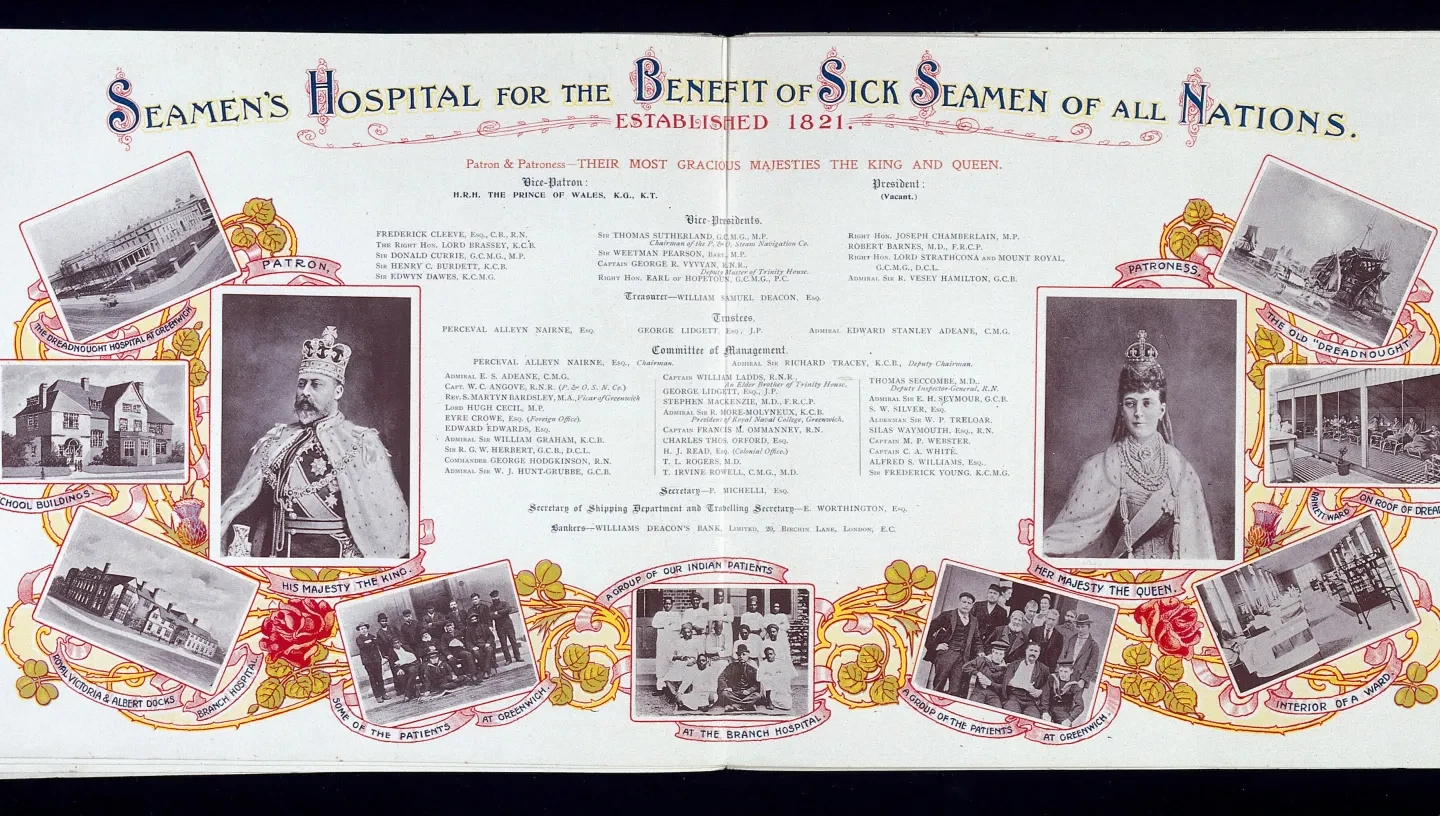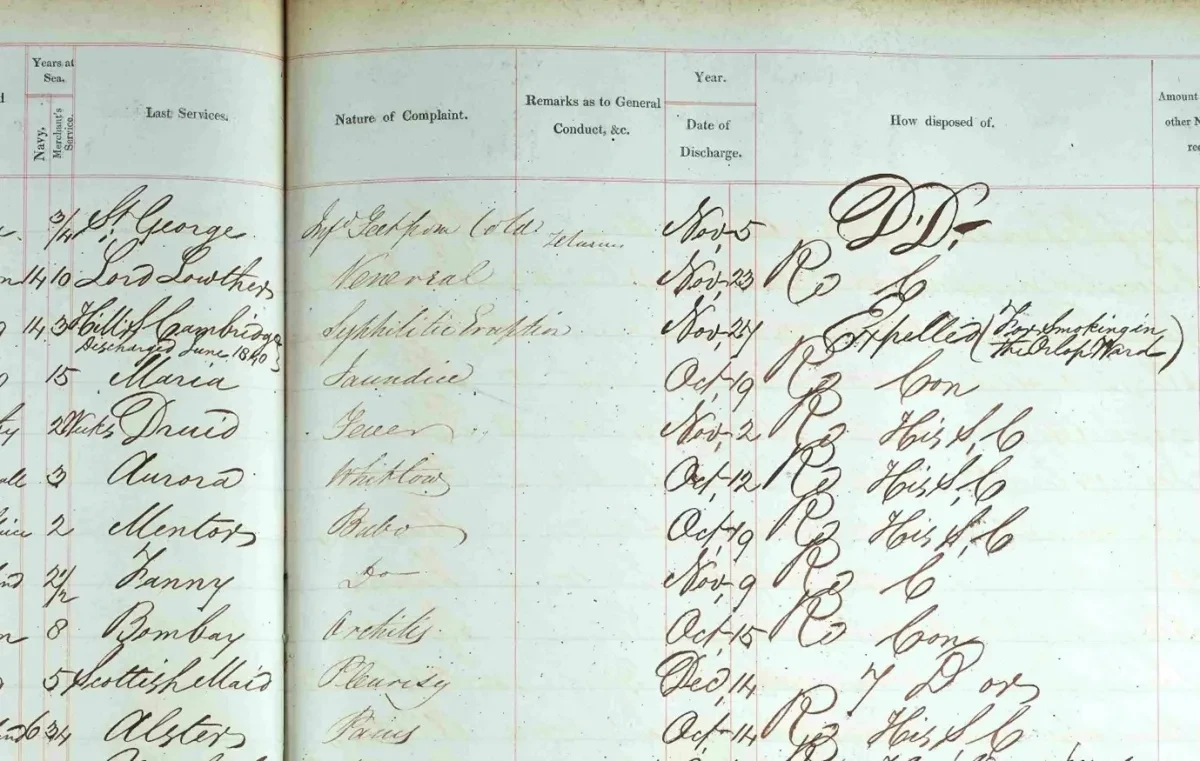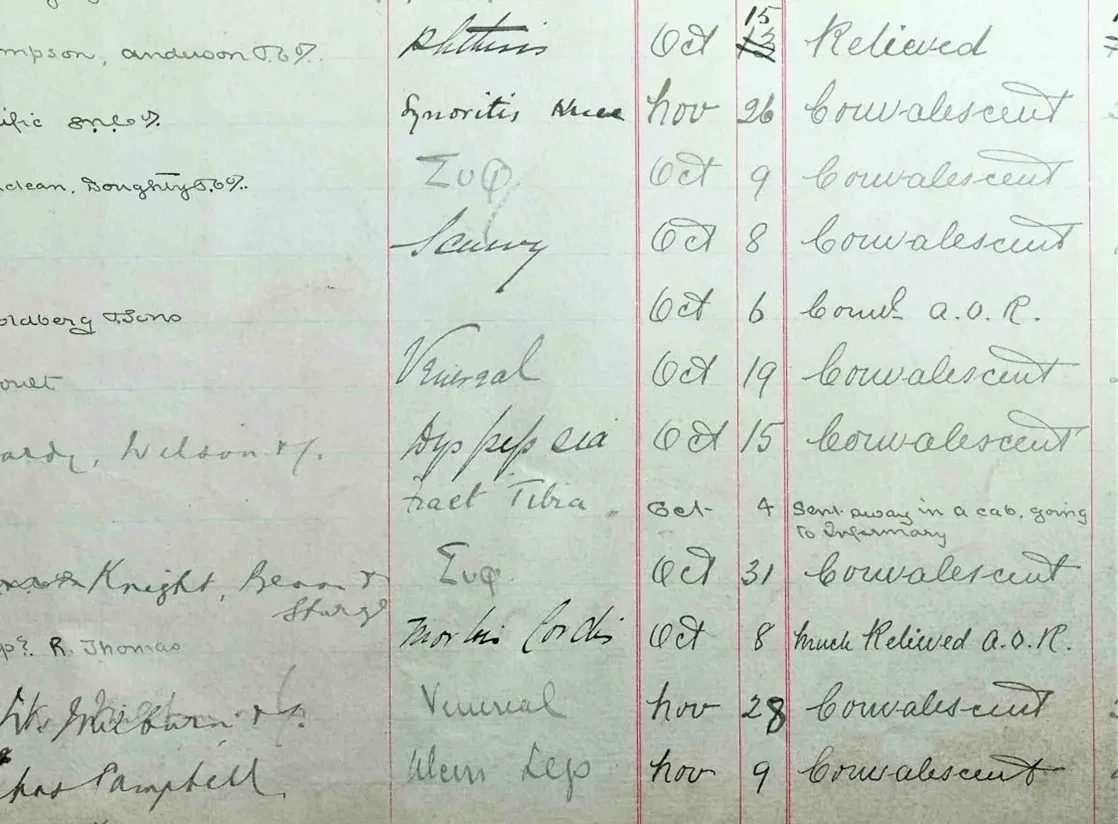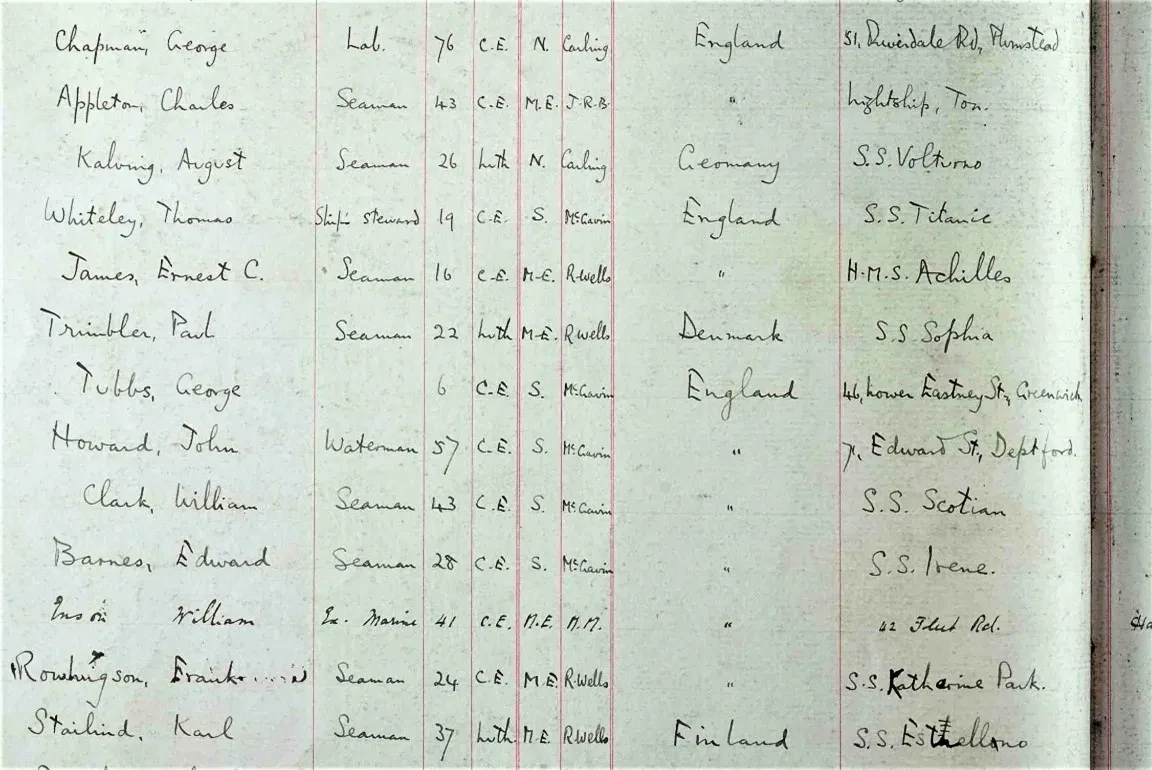
Discover some of the surprising entries recently discovered in the medical records of the Dreadnought Seamen’s Hospital.
The project
Last September saw the culmination of the efforts of a dedicated team of volunteers who have used the citizen science platform Zooniverse to transcribe records of the Dreadnought Seamen’s Hospital held at Royal Museums Greenwich.
The HMS NHS Project was an opportunity for volunteers to contribute to the research surrounding a fascinating set of historical records. The admission registers of the Dreadnought Seamen’s Hospital provide information on thousands of sick and injured seafarers from all over the globe, reflecting the international traffic of the port of London. There are also a great many ‘shore casualties’, emergencies in the Greenwich area, and wartime casualties from different branches of the military services.
A searchable index of in-patients between 1826 and 1930, together with digital photographs of the pages in the registers, has been available via the Ancestry family history website since 2017. This index contained some but not all of the data entered in the registers. The HMS NHS Project went further, using crowdsourcing to fully transcribe the records from this period. It included details of their last ship or place of employment, complaints diagnosed, how long patients were accommodated, and their condition on discharge. This will provide researchers with the means to carry out a much broader range of searches, for example using vessel names, or terms associated with medical conditions.
The Zooniverse platform enabled volunteers to work wherever it suited them; and independently decide which workflows (columns in the admission registers) to focus on, how much time to allocate and how many transcriptions to complete. On the TALK part of the website, they were able to get answers to problems or share knowledge with other members of the project, thus promoting a standard approach in dealing with certain issues.

Data in the ‘last services’, ‘nature of complaint’ and ‘how disposed of’ workflows on a page of the register from October 1840 (RMG reference DSH/7).
The project was launched in June 2021 and completed over a period of 26 months, with Part One covering the registers from 1826-1870, and then Part Two comprising the registers from 1871-1930. Altogether, 2740 volunteers transcribed (or ‘classified’) 103,346 images (‘subjects’) in 2 years and 3 months. This achievement would not have been possible without the contribution of every volunteer who was willing to tackle the challenges of palaeography, including difficult handwriting, odd abbreviations, and variations in spelling. Every session, however long or short, made a difference.
Once it is cleaned, formatted and standardised, the huge pool of data from the HMS NHS Project will be made available to the research community via the Archive Catalogue on the Royal Museums Greenwich website. It will form the basis of some exciting investigations into medical history, which could examine patterns in the incidence of particular illnesses and injuries, the influences of factors such as working conditions at sea, and contrasts between the experiences of different seafaring communities. The data could also reveal how the Dreadnought’s performance in the successful treatment of in-patients was affected by internal changes, such as the move from ship to shore in 1870. Researchers might also use the data to chart the development of specialist areas of medical work, which enhanced the Dreadnought’s professional standing and benefitted the wider profession.
Surprising discoveries
Previous blogs in this series have reported on some of the surprising discoveries and interesting connections unearthed by our volunteers. Some of the entries in the ‘name’ workflow have significance through association with celebrity or notoriety, distinguished military service, or family connections. For example, one of the volunteers stumbled upon Stanwix Melville, one of the sons of the American writer Herman Melville, admitted to the Dreadnought with bronchitis in April 1870. Another volunteer found an ancestor, a master mariner from Guernsey, who was treated for venereal disease in 1873. There were some lingering questions about the circumstances of some patients which the records were not able to answer. For example, what happened to the bodies of foreign seafarers who sadly died at the Dreadnought and could not be repatriated?
'Nature of complaint'
The ‘nature of complaint’ workflow was of particular interest to volunteers who had some experience in the medical profession, or who wanted some variety. Medical terms were frequently abbreviated or could be expressed in another language, such as Latin. At least one clerk was in the habit of using combinations of Greek letters to signify phthisis and syphilis. On the whole, the registers provide grim evidence of the many different forms of injury or disease that seafarers could fall victim to, and the important role of the Dreadnought in promoting recovery. Volunteers were often surprised by how long the problem of scurvy persisted, and the frequency of admissions relating to venereal disease. They noticed wider events reflected in the records, such as epidemics of infectious diseases in London, and the arrival of ambulance trains bringing wounded from theatres of war including the Western Front and Gallipoli. Closer inspection of entries in the ‘how disposed' column highlighted the isolation hospitals, convalescent homes, consular offices and other agencies that had roles in the welfare of seafarers.

A page from the register in October 1894 with two examples of the Greek letters ‘Sigma upsilon Phi’ used as an abbreviation for syphilis in the ‘nature of complaint’ column (RMG reference: DSH/25).
'Last ship'
Many vessels with unfamiliar names visited the port of London, hence entries in the ‘last ship’ column were sometimes difficult to decipher. Even when volunteers got a feel for the idiosyncrasies of the handwriting, some names had to be resolved with reference to contemporary volumes of Lloyd’s Register of Shipping or The Mercantile Navy List. The names of static training and reformatory ships moored nearby on the River Thames repeatedly appear. In the later registers, ships belonging to the General Steam Navigation Co. often feature, as they made regular short crossings between London and Continental ports. As examples of celebrity vessels in the registers, we have the composite clipper Cutty Sark (1869), the last ship of able seaman Charles Burridge, admitted with rheumatism in October 1874; and the passenger liner Titanic (1912) in connection with the steward Thomas Whiteley, a survivor of the sinking who was admitted with appendicitis in December 1913.

Thomas Whiteley, a survivor from the sinking of the Titanic (1912), appearing among the admissions in December 1913 (RMG reference: DSH/30).
Thank you
Our efforts to make this data available for research continue, so watch out for announcements on the Royal Museums Greenwich website in due course. In the meantime, the Project Team extends heartfelt thanks to each and every volunteer who has contributed to this project, either in Part One or Part Two, or both!

The Dreadnought Seamen's Hospital Records
Header image: Seamen's Hospital booklet. Wellcome Collection.